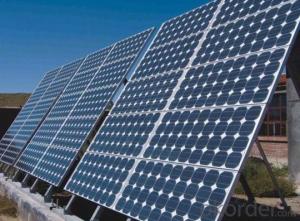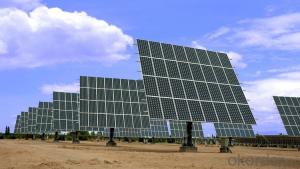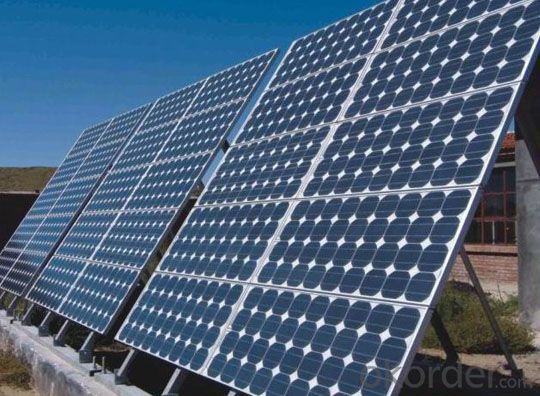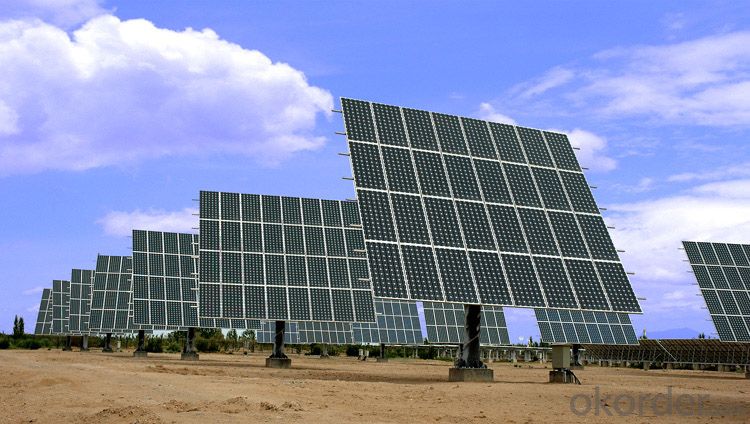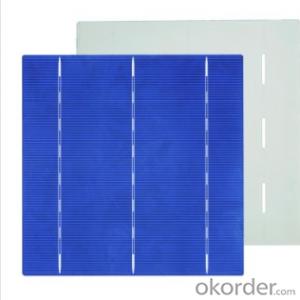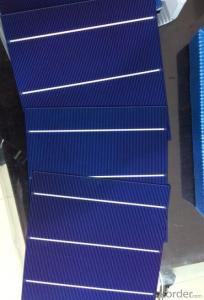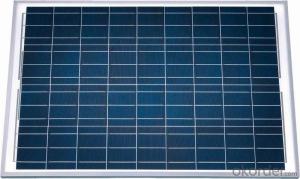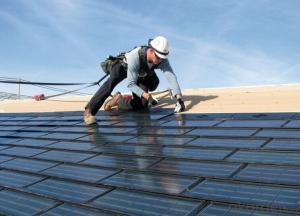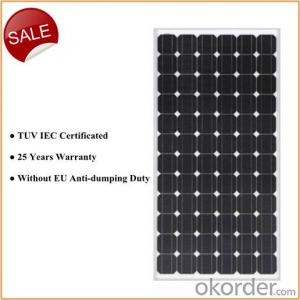6x6 Solar Cells Mono PV Solar Panel with IEC, TUV, CE, CEC 300W
- Loading Port:
- China Main Port
- Payment Terms:
- TT OR LC
- Min Order Qty:
- -
- Supply Capability:
- 10000000000000 watt/month
OKorder Service Pledge
Quality Product, Order Online Tracking, Timely Delivery
OKorder Financial Service
Credit Rating, Credit Services, Credit Purchasing
You Might Also Like
Quick Details
| Place of Origin: | Guangdong China (Mainland) | Brand Name: | sunshine | Model Number: | sy-280p |
| Material: | Polycrystalline Silicon | Size: | 1960*980*40mm | Number of Cells: | 72PCS |
| Max. Power: | 280W | VOC: | 36V |
Packaging & Delivery
| Packaging Detail: | Crate |
| Delivery Detail: | 30 |
Specifications
1, A grade solar cell
2,Life of 20-35 years
3,Super quality competitve price
4,International Standard

solar panels 280W poly Specification
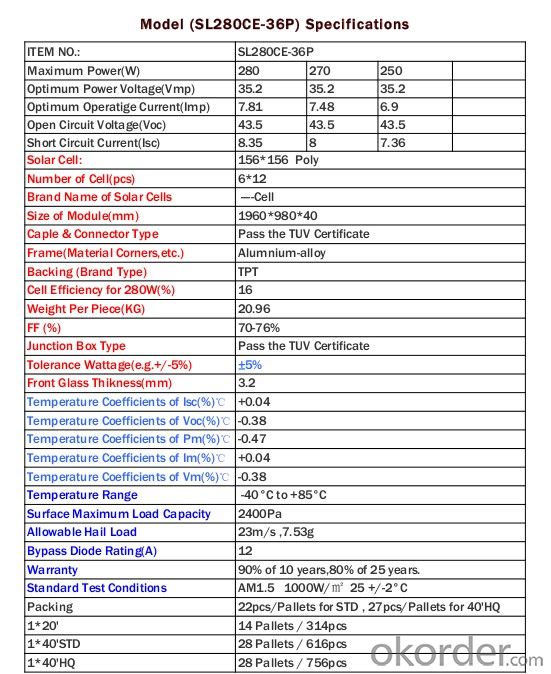
- Q: Can solar cells be used in cloudy or rainy weather?
- Yes, solar cells can still generate electricity in cloudy or rainy weather, although their efficiency may be reduced compared to sunny conditions.
- Q: How do solar cells impact energy security?
- Solar cells positively impact energy security by providing a reliable and sustainable source of electricity. As they generate power from sunlight, solar cells reduce dependence on fossil fuels, which are finite and contribute to environmental degradation. By diversifying the energy mix and promoting renewable energy adoption, solar cells enhance energy resilience and reduce vulnerability to price fluctuations and supply disruptions. Additionally, solar cells can be deployed in remote areas, increasing access to electricity and improving energy security for off-grid communities.
- Q: Can solar cells be used to power communication systems?
- Yes, solar cells can be used to power communication systems. Solar cells are capable of converting sunlight into electricity, which can then be used to power various electronic devices, including communication systems. This is particularly advantageous in remote or off-grid areas where it may be difficult or expensive to establish traditional power infrastructure. Additionally, solar-powered communication systems offer a sustainable and environmentally friendly alternative to relying solely on fossil fuels for energy.
- Q: What is the cost of producing a solar cell?
- The cost of producing a solar cell can vary depending on several factors such as the type and quality of materials used, the manufacturing process, and economies of scale. However, on average, the cost of producing a solar cell ranges from $0.20 to $0.70 per watt.
- Q: What is the role of silicon in solar cells?
- The role of silicon in solar cells is to act as a semiconductor material that converts sunlight into electricity through the photovoltaic effect. Silicon is chosen for its ability to absorb photons and release electrons, creating an electric current that can be harnessed as a renewable energy source.
- Q: Can solar cells be used in powering medical devices?
- Yes, solar cells can be used in powering medical devices. Solar cells convert sunlight into electricity, which can then be used to power various medical devices such as portable diagnostic tools, wearable health monitors, or even small medical implants. This technology offers a sustainable and reliable energy source, particularly in areas with limited access to electricity or during emergencies where traditional power sources may not be available.
- Q: What is the current situation and the recent progress space solar cells in China?
- The power generated by solar cells is the main and most important energy sources in the out spacer, which makes this technology so vital in our country. You can imagine if we have enough and stable power generation generated by power cells, we will make a huge progess in the research and development in space.
- Q: What is the usage of solar cells?
- The usage of solar cells can be either industrial and residential.
- Q: How do solar cells affect the environment?
- Solar cells have a positive impact on the environment as they generate electricity from a renewable source, the Sun, without emitting greenhouse gases or harmful pollutants. This reduces reliance on fossil fuels, mitigates air and water pollution, and contributes to the fight against climate change. Additionally, solar energy does not require water for operation, which helps conserve this precious resource. Although there are some environmental concerns related to the production and disposal of solar cells, the overall benefits greatly outweigh these drawbacks.
- Q: Can solar cells be used in museums?
- Yes, solar cells can be used in museums. They can be used to power various devices and lighting within the museum, reducing reliance on traditional energy sources and contributing to a more sustainable and environmentally friendly operation. Additionally, solar cells can be integrated into the design of museum buildings, providing a visually appealing and efficient way to generate renewable energy.
Send your message to us
6x6 Solar Cells Mono PV Solar Panel with IEC, TUV, CE, CEC 300W
- Loading Port:
- China Main Port
- Payment Terms:
- TT OR LC
- Min Order Qty:
- -
- Supply Capability:
- 10000000000000 watt/month
OKorder Service Pledge
Quality Product, Order Online Tracking, Timely Delivery
OKorder Financial Service
Credit Rating, Credit Services, Credit Purchasing
Similar products
Hot products
Hot Searches
Related keywords
